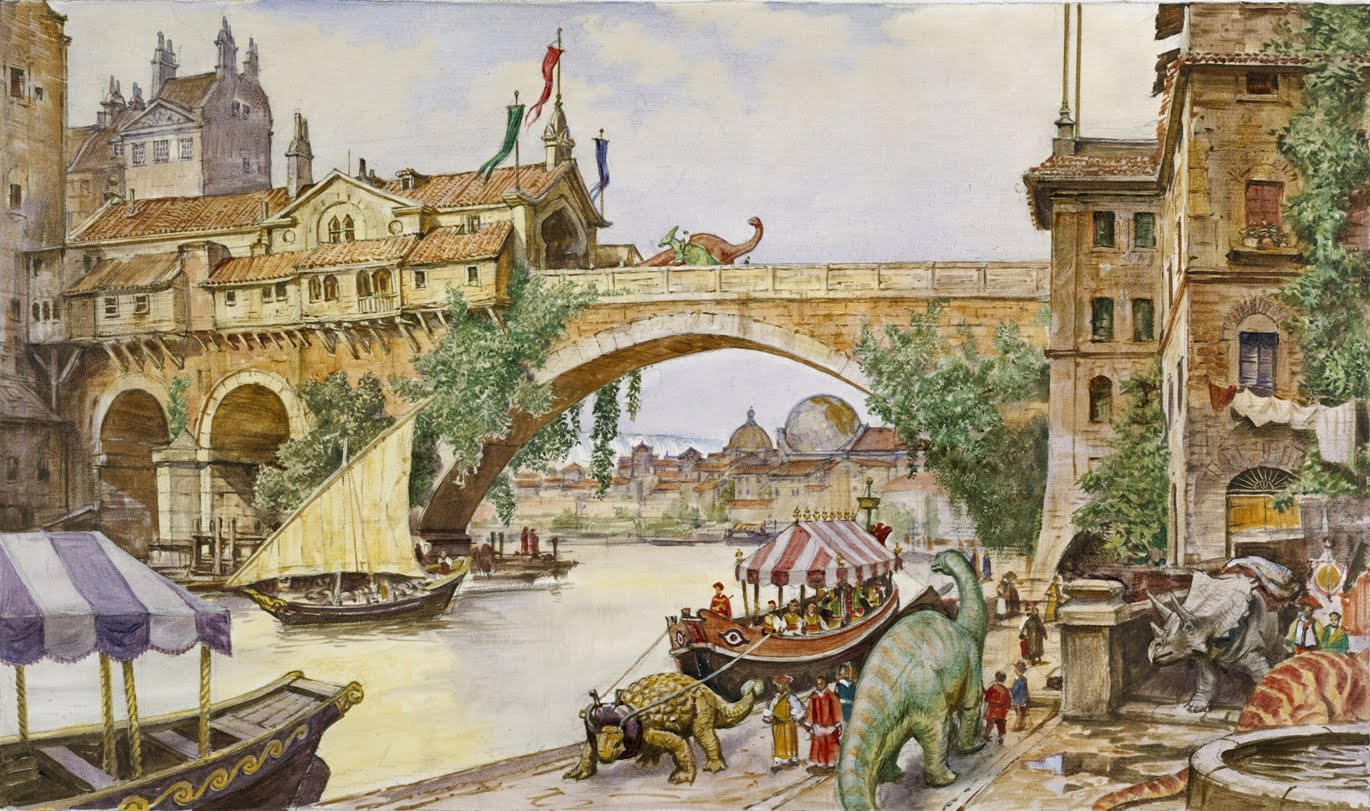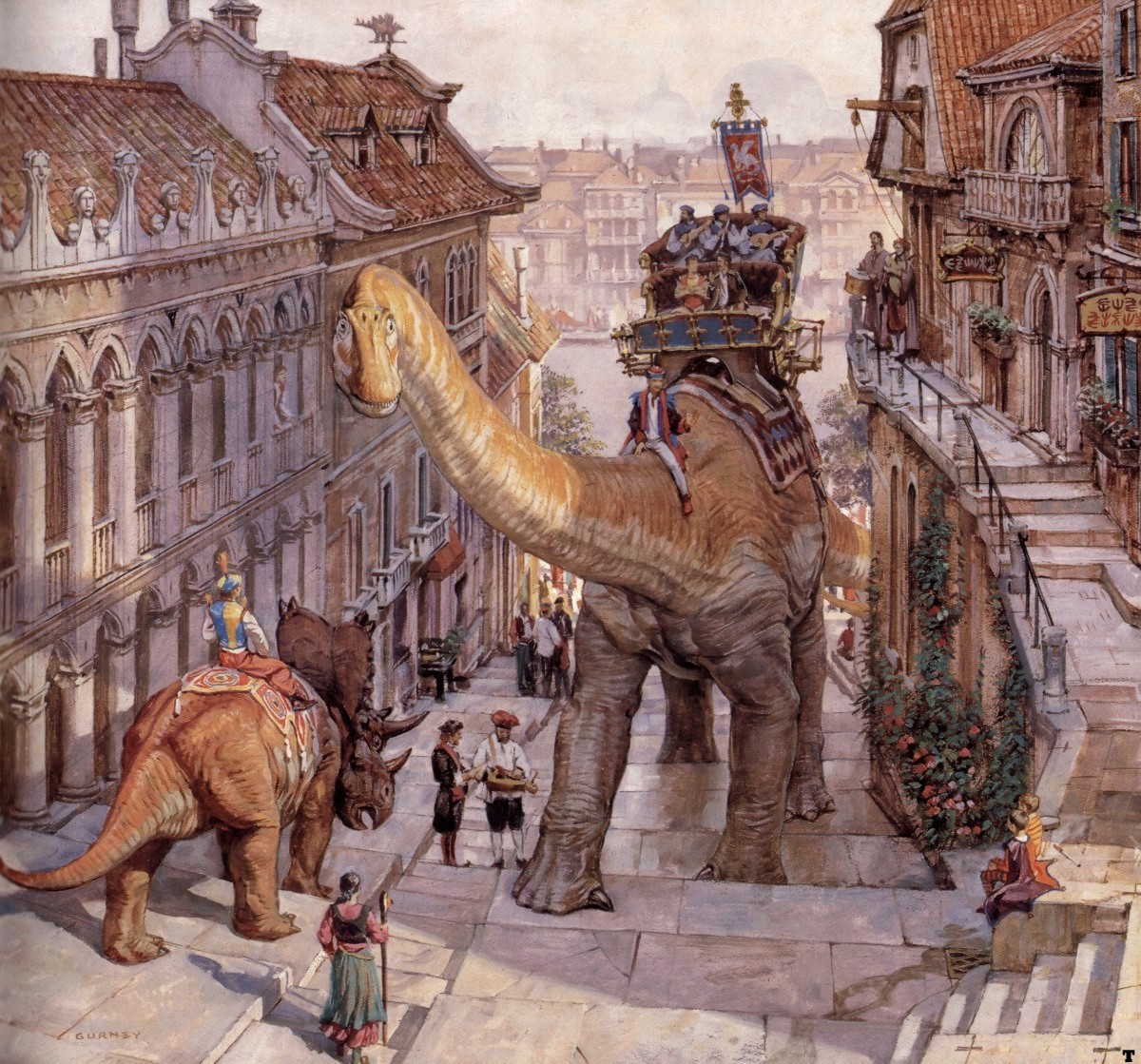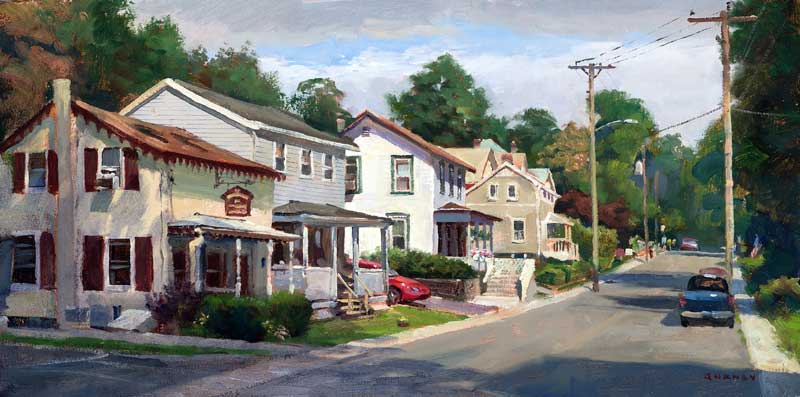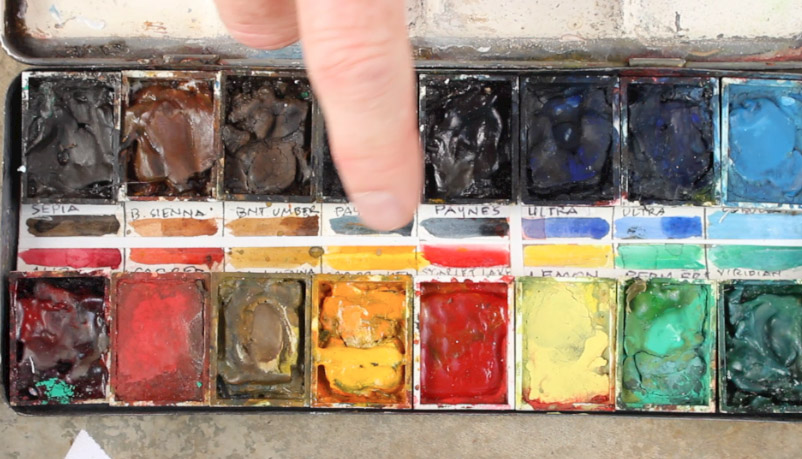
With this interview I begin to move away from interviewing watercolor artists that have only been featured here on the gallery to interviewing artists that inspire me across the board. I’m really excited to share this interview with you.
James Gurney is a prolific blogger and accomplished artist. His work with National Geographic inspired him to create the illustrated book series Dinotopia and he’s gone on to publish several best-selling books on painting including Color and Light: A Guide for the Realist Painter. I’ve been subscribed to his daily blog, the Gurney Journey, for a few years and it is an incredible resource for artists.
This interview has been sitting in my inbox since August so let’s get on with it!
How did you get started in art and what have been your biggest influences along the way?
I went first to UC Berkeley and majored in archaeology, a subject I that always fascinated me. I then went to school for a couple of semesters at Art Center College of Design in Pasadena, where I learned some very helpful material about perspective. However, most of what I have learned has been self-taught.
I developed my own curriculum of self-teaching based on The Famous Artist’s Course from the 1950’s, Andrew Loomis’s book Creative Illustration, and the teaching methods from the 19th century French academy, which involved fairly detailed anatomy and cast drawing. The best book for learning about French academic painting methods is The Academy and French Painting in the Nineteenth Century by Albert Boime, 1971.
Norman Rockwell was my childhood hero. I also always loved MC Escher. Both artists really succeed in pulling viewers into their work. I also greatly admire the Dutch book illustrator Rien Poortvliet. Other artists I admire: Frederic Church, William Bouguereau, Adolph Menzel, Sir Lawrence Alma-Tadema, James Perry Wilson, Tom Lovell, and Howard Pyle.


What inspired or led to the Dinotopia series?
I did about a dozen assignments as an illustrator for National Geographic. They sent me to Jerusalem, Athens, and Rome. It was a huge inspiration to see those famous old cities. I spent time with Rick Bronson, an archaeologist who was just like Indiana Jones. He led me through overgrown jungles to find little known Etruscan ruins, and we descended down ladders into newly-discovered tombs. Sitting around the campfire at night, Dr. Bronson and I would talk about dreams of discovering a lost city like Machu Picchu or Troy. I realized that I could always make a painting of such a lost city, and that led to Dinosaur Parade and Waterfall City. After that, I drew a map of an unknown island and came up with the idea of a Victorian explorer who discovers this island and reports about it in his journal.
How have your tools or techniques changed from when you started until now?

All the pictures in Dinotopia are painted in oil. I often use oil in transparent washes over a line drawing that has been sealed with acrylic matte medium. I’ve been using just turpentine and Liquin for the painting. Sometimes I’ll start with a pen and ink drawing or an acrylic wash-in. I often work on heavy weight illustration board, and sometimes on oil-primed linen canvas.
For on-location work, I’ve been using more water media lately: watercolor, gouache, and casein. I’ve done some video tutorials on watercolor and gouache, which people can check out at jamesgurney.com, or see the trailer at “Gouache in the Wild.“
The Gurney Journey blog seems like an amazing community; How did that get started and how have you benefitted from putting in the work?
Yes, it’s a wonderful community, and I learn a lot from other people in it. It got started when I was doing the book tour for Dinotopia: Journey to Chandara, which came out in 2007. The blog posts in the next two years then led to my next two books, Imaginative Realism, and Color and Light, which went on to be best-sellers.
Doing a blog is a lot of work, and it doesn’t pay directly. The bottom-line benefits are hard to quantify. Does it lead to jobs or to recognition? Perhaps, but that’s not why you do it.. Potential employers or collectors will scan your entire Web presence to get a feeling for you and your work. I suppose blogging is a form of marketing, but I don’t think of it that way very often. The truth is paradoxical: You give stuff away so that you can sell it later.

Here are some blogging tips:
- Write about just one thing per post.
- Keep it brief.
- Use a simple background. Black type on white is the easiest to read.
- Vary your approach. Switch between funny stories, obscure videos, geeky factoids, and practical studio tips.
- Stay positive, or at least neutral. If you must criticize, be constructive.
- Give three doses of information for every dose of opinion.
- Compose your posts offline in another format, and read them over a few times before publishing.
- Credit and link your sources.
- Share lots of links, but save them for the end of the post.
What is your favorite piece that you’ve done and why?
I can’t pick out a favorite, but lately I’ve got a lot of enthusiastic feedback to paintings of commonplace subjects. E.g. Blockbuster.
One more link I’d like to personally put into this interview is James’ post on Watercolor in the Wild Materials. It is a great post showing you tons of tips and tools for doing watercolor in the wild.
My thanks to James Gurney for taking the time to write up this interview and find a photo that I can use on the site. His blog is a big inspiration for me to keep going with The Watercolor Gallery.
You can find James at his web site, his blog The Gurney Journey, on Twitter, on YouTube.
